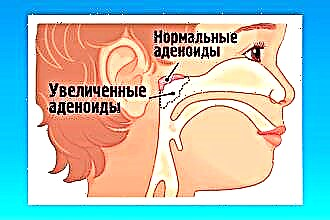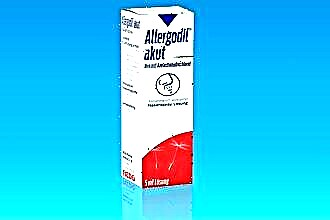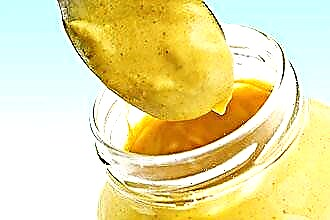Normal nasal breathing during sleep is a prerequisite for a person's vigor and clear mind. If a child has a stuffy nose at night, he will wake up sluggish and tired - all this is from lack of sleep and insufficient oxygen supply to the brain.
In addition, nasal breathing provides warming and purification of the air, and thus is the key to the health of the respiratory system. We all know that if a child does not breathe well through the nose, he is forced to switch to oral breathing, and this leads to dryness of the oral cavity and pharynx, the ingestion of various microorganisms on the tonsils and pharynx, which ultimately significantly increases the likelihood of developing infectious diseases of the throat - tonsillitis. pharyngitis or laryngitis.
Why does nasal congestion occur at night? We will talk about this in this article.
Causes of congestion
There are 3 reasons why the nose cannot breathe:
 The first is swelling of the mucous membrane. The formation of edema is an integral part of the inflammatory process, due to the flow of blood to the inflamed area. At the same time, the blood vessels expand, and, therefore, the volume of the mucous membrane increases. As a result, the nasal passages are narrowed and the passage of air through them can be completely blocked.
The first is swelling of the mucous membrane. The formation of edema is an integral part of the inflammatory process, due to the flow of blood to the inflamed area. At the same time, the blood vessels expand, and, therefore, the volume of the mucous membrane increases. As a result, the nasal passages are narrowed and the passage of air through them can be completely blocked.- The second reason is that the nose is "clogged" with mucous secretions. If the mucus is liquid, it comes out easily, but if it is viscous and thick, the child can neither blow their nose nor breathe normally.
- In addition, nasal breathing can be difficult as a result of the formation of adenoids, polyps, curvature of the nasal septum and other morphological changes.
Among the factors that can provoke both edema and increased mucus production, first of all, infectious diseases (viral and bacterial rhinitis), as well as allergic reactions (allergic rhinitis), should be distinguished.
During the day, the child breathes through his nose, and at night he opens his mouth? Let's see why nasal breathing is difficult at night.
Why does the nose stuff up at night?
An inflamed nasopharynx constantly produces mucus, which flows both through the nasal passages, flowing outward, and through the pharynx, entering the throat. During the day, the child involuntarily swallows mucus that enters the throat. However, in the evening, getting ready for bed, the child goes to bed, and therefore, the outflow of mucus from the nasopharynx is complicated. Firstly, in a horizontal position, all the mucus flows down the throat, and secondly, its swallowing stops in a dream. If at the same time the mucus is viscous and thick, and the soft tissues of the nasopharynx are edematous, nasal breathing is practically impossible.
A common cause of nasal congestion at night is postnasal drip syndrome. This is a condition in which mucus flows down the back of the nasopharynx into the throat.
Symptoms of postnasal leakage:
- nasal congestion at night;
- cough in the morning, sometimes at night;
- a sore throat after waking up;
- a feeling of accumulation of mucus in the throat;
- headache, weakness, and drowsiness may occur as a result of difficulty in nasal breathing.
Postnasal leakage syndrome can be observed in acute or chronic rhinitis, inflammation of the adenoids, vasomotor rhinitis, curvature of the nasal septum and other pathologies in which the mucous membrane of the nasopharynx produces phlegm.
Postanasal leakage is also observed with allergic reactions. What can cause allergic rhinitis at night? Most often it is dust or pet hair. In addition, an allergic reaction could be provoked by household chemicals - microparticles of powder or rinse aid on bed linen, as well as materials from which toys are made. Often indoor plant pollen is an allergen.
Another reason why the nose does not breathe at night is the excessive dryness of the air in the child's bedroom.
Dry and dusty air in the bedroom causes the formation of protective mucus in the nasopharynx, which dries up and complicates nasal breathing.
Treatment
Treatment in this case includes 3 areas:
- symptomatic - restoration of nasal breathing;
- etiological - aimed at the disease that caused the congestion;
- auxiliary - facilitating the well-being of the child and accelerating his recovery.
Remove edema
The most effective medicine for those with a stuffy nose is vasoconstrictor nasal drops and sprays. They act directly on the smooth muscles of the blood vessels, causing them to contract. As a result, the volume of blood vessels (and, as a consequence, of the mucous membrane) decreases, and the nasal passages "open".
Despite the pronounced effectiveness in relieving nasal breathing, vasoconstrictor drops should be used in exceptional cases, strictly following the dosage.
When using vasoconstrictor drops, parents should remember that:
- the maximum course of vasoconstrictor treatment does not exceed 5-7 days (see the manufacturer's instructions);
- instillation frequency - no more than 1 time in 4 hours;
- possible side effects - dry mouth and nose, burning sensation in the nasopharynx, swelling of the mucous membrane, headache, dizziness, indigestion, sleep, etc.;
- exceeding the recommended dosage and duration of treatment significantly increases the risk of side effects;
- with moderate use, adverse reactions are extremely rare.
Children under 12 years old should use special children's forms of vasoconstrictor drops containing a smaller amount of active ingredient, for example, Naphthyzin for children, Nazol Baby and others.
Making breathing easier
Not only vasoconstrictor drops are able to facilitate nasal breathing. Moreover, pediatricians recommend the use of vasoconstrictors extremely rarely, and the rest of the time, as needed, use other means for the nose, such as:
- Physiological solution (0.9% solution of kitchen salt in water). Saline is instilled into the nose using a pipette or a clean nasal drop bottle. You can bury your nose with such a remedy every 20-30 minutes - it is impossible to overdose. It cleans the nasal passages of dust, loosens mucus, helping to cleanse the nasopharynx and restore nasal breathing.
- Seawater-based nasal drops / sprays (Aqua Maris, Salin and many analogues) are saline solutions that act similarly to saline. May contain various minerals that have a beneficial effect on the condition of the mucous membrane. These drops can be used for all types of rhinitis, as well as for a feeling of dryness in the nose.
- Oily nasal drops, such as Pinosol, contain vegetable oils that prevent the mucous membrane from drying out, reduce swelling and inhibit the vital activity of microorganisms. Such drops will help with viral or bacterial rhinitis.
- For allergic rhinitis, antihistamine drops can help by blocking the production of substances that cause swelling and mucus production. For example, children over 4 years old can be prescribed Allergodil, a drug that allows you to get rid of the symptoms of allergic rhinitis in just 1 instillation per day. The course of treatment is up to 6 months. Children younger (starting from 1 month) are suitable for Fenistil drops.
 Combined drops (Sanorin, Vibrocil) contain both vasoconstrictor and anti-inflammatory components, so they can be used for various types of rhinitis.
Combined drops (Sanorin, Vibrocil) contain both vasoconstrictor and anti-inflammatory components, so they can be used for various types of rhinitis.
In addition to nasal drops, various auxiliary procedures can facilitate nasal breathing:
- massage of the bridge of the nose, temples and the area of the maxillary sinuses;
- inhalation of evaporating aromatic oils from pine, fir, eucalyptus;
- drinking plenty of fluids;
- inhalation with warm steam;
- rubbing the chest with warming ointments (their vapors make breathing easier).
Warming the nasopharynx (a warm compress on the bridge of the nose, applying a bag of hot salt, hot drinks) usually increases the swelling, as the blood vessels dilate when the temperature rises.
Improving the conditions in the bedroom
Free nose breathing at night is largely determined by the quality of the air in the bedroom. The air in the nursery should be clean, humid and cool (temperature about 20C, humidity within 60-70%). It is in such conditions that the mucous membrane of the nasopharynx maintains normal activity - mucus is formed in sufficient quantities, does not accumulate in the nasal passages and does not clog them.
Sleeping in a bedroom with clean fresh air is much healthier than in a hot, unventilated room, not only for the nose, but for the whole body.
How to achieve ideal conditions in the nursery? Firstly, do wet cleaning often - this helps to get rid of dust and moisturizes the air. Second, ventilate the room every day. It is helpful to do this before bed.
During the heating season, the air is most dry - to restore normal humidity, hang wet towels on the batteries. A humidifier can be purchased for convenience.
Removing the cause of congestion
Parents should understand that restoring breathing improves the well-being of the child, but does not remove the root cause of the congestion - the disease that caused the appearance of edema or snot.
It is not enough just to drip the nose with vasoconstrictor drops and forget about the problem - the child needs a pediatrician examination. The child will be examined and prescribed treatment that is suitable specifically for your case - antiviral, antibacterial or antiallergic. It is impossible to exclude the presence of adenoids, curvature of the septum - it is impossible to cope with such problems at home.

 The first is swelling of the mucous membrane. The formation of edema is an integral part of the inflammatory process, due to the flow of blood to the inflamed area. At the same time, the blood vessels expand, and, therefore, the volume of the mucous membrane increases. As a result, the nasal passages are narrowed and the passage of air through them can be completely blocked.
The first is swelling of the mucous membrane. The formation of edema is an integral part of the inflammatory process, due to the flow of blood to the inflamed area. At the same time, the blood vessels expand, and, therefore, the volume of the mucous membrane increases. As a result, the nasal passages are narrowed and the passage of air through them can be completely blocked. Combined drops (Sanorin, Vibrocil) contain both vasoconstrictor and anti-inflammatory components, so they can be used for various types of rhinitis.
Combined drops (Sanorin, Vibrocil) contain both vasoconstrictor and anti-inflammatory components, so they can be used for various types of rhinitis.

